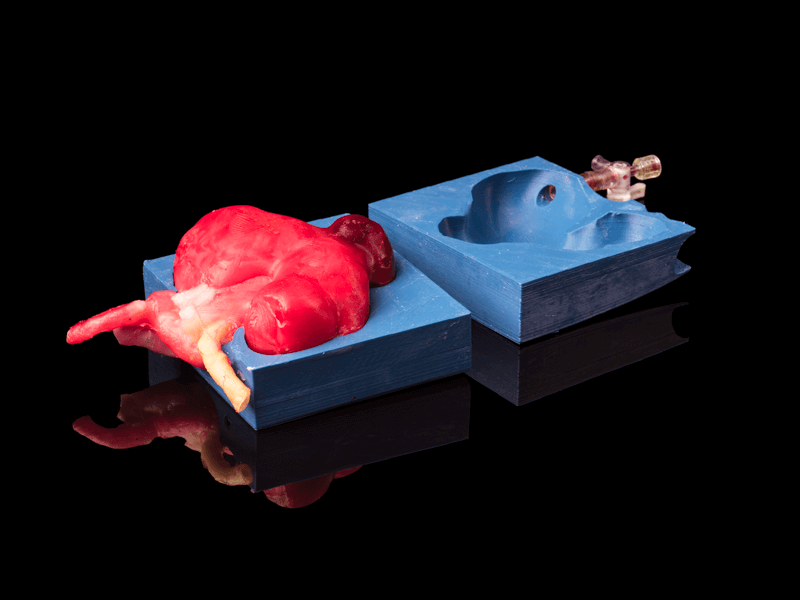What you see in the image above is a lobe of a liver, times two—on the right, a flesh-and-blood one, removed from a transplant donor, and on the left, one created from plastic to represent bile ducts, arteries and veins, laid down, layer by layer, by a 3-D printer. The goal of such technology: to help surgeons plan and practice complex procedures and train new surgeons with simulators that respond as a patient would.
Surgeons navigate complex anatomical terrain as they manipulate scalpel and suture to cut and stitch precisely and quickly. Their job is made harder by the fact that human anatomy is far from uniform. To properly prepare, they routinely use two-dimensional images from computerized tomography (CT) scans or magnetic resonance imaging (MRI) to plan.
But increasingly they are turning to realistic 3-D models that are specific for individual patients.
Such models are already used to educate patients, to do general training and to plan and practice especially difficult procedures. But in the future, 3-D models, be they physical or virtual, could become routine tools for training surgeons or mapping procedures in advance.
From 2-D to 3-D
To 3-D-print, researchers first combine the many successive digital 2-D slices from CT or MRI scans into a topographic map that highlights the complex structures at different levels of the organ. The printers then build the models, layer by layer—sometimes using an inkjet to deposit droplets of resin that are fixed into place by shining UV light, or by extruding polymer ribbons that harden once they’re released.
The technology was first developed in the 1980s, when such printers were expensive and temperamental and materials were limited. But in the last few years, advances have made it affordable even for home users, and improvements in software and printing methods have enabled scientists and engineers to print complex mixtures of colors and textures with high accuracy, thus creating far more accurate and realistic organ models, as outlined in an overview in the 2018 Annual Review of Analytical Chemistry…







